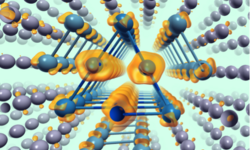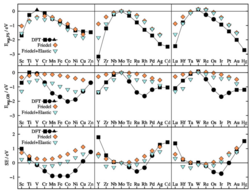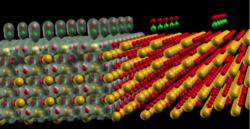Basic thermodynamic quantities
Ab-initio methods based on density functional theory (DFT) allow to predict materials properties based on the chemical composition and crystal structure. For example, DFT calculations give access to the thermal expansion coefficients in alloys [Razumovskiy2014, Bochkarev2016, Dengg2016] which opens the way to design alloys with specially tuned temperature behavior for reducing the thermo-mechanical load and improving the reliability of components.
Moreover, ab-initio calculations can be used to predict defects formation energies (vacancies, impurities) as a function of the external conditions like pressure and temperature [Razumovskiy2014, Razumovskiy2015, Ruban2016], which impacts a series of material quantities like mechanical properties, thermal transport, electric conductivity or diffusion.
Using state-of-the-art methods it is also possible to predict diffusion coefficients for a material with specific chemical compositions [Ding2014, Muehlbacher2015, Bochkarev2016]. Finally, ab-initio calculations allow one to determine the phase stability in a system as a function of the crystal structure, the chemical composition and the magnetic state.To do so, ab-initio calculations are linked to methods on larger lengths scales, such as the cluster expansion technique [Chakraborty2010, Sax2015], Monte-Carlo simulations [Ruban2012, Gorbatov2013, He2016] or the CALPHAD method [Yeddu2012, Razumovskiy2014, Povoden-Karadeniz2015].



















![Ab-initio results a) for the migration barrier of diffusion of N, Ti and Cu atoms in TiN [Bochkarev2016].](/fileadmin/_processed_/b/3/csm_Sim_FE_Atomistic_Grundgroessen_44e5484fa4.png)
![Young’s modulus (E) as a function of orientation in a) ferromagnetic and b) paramagnetic bcc Fe [Razumovskiy2011].](/fileadmin/_processed_/7/8/csm_Sim_FE_Atomistic_Grundgro__oessen1_186635e5eb.png)
![Ab-initio stacking fault energy in paramagnetic fcc Fe and Fe-25%Mn compared to experiment [Razumovskiy2016].](/fileadmin/_processed_/0/6/csm_Sim_FE_Atomistic_mechan_Eigenschaften_7e94168477.png)


